As an owner of an outdoor dog, ensuring their well-being in the yard is a top priority. From providing adequate shelter to addressing safety concerns, there are essential factors to consider. Understanding the importance of exercise and social interaction for your “outside dog” is crucial in maintaining their overall health and happiness. Implementing proper training methods tailored to outdoor environments, such as the yard, can enhance your dog’s behavior and responsiveness. By creating a comfortable and secure outdoor space for your furry companion, you can promote a fulfilling lifestyle that aligns with their natural instincts.
Key Takeaways
- Ensure the chosen breed is suitable for outdoor living by considering their size, coat type, and energy levels.
- Provide a safe and secure outdoor space for your dog, including proper fencing and shelter from the elements.
- Regular exercise is crucial for outdoor dogs to maintain their physical and mental well-being.
- Socialize your outdoor dog early and consistently to prevent behavioral issues and ensure they interact well with others.
- Stay vigilant about your outdoor dog’s health and maintenance needs, including regular vet check-ups, grooming, and parasite prevention.
- Implement practical care tips like providing fresh water, monitoring for heatstroke in hot weather, and using flea and tick prevention methods.
Understanding Outdoor Dogs
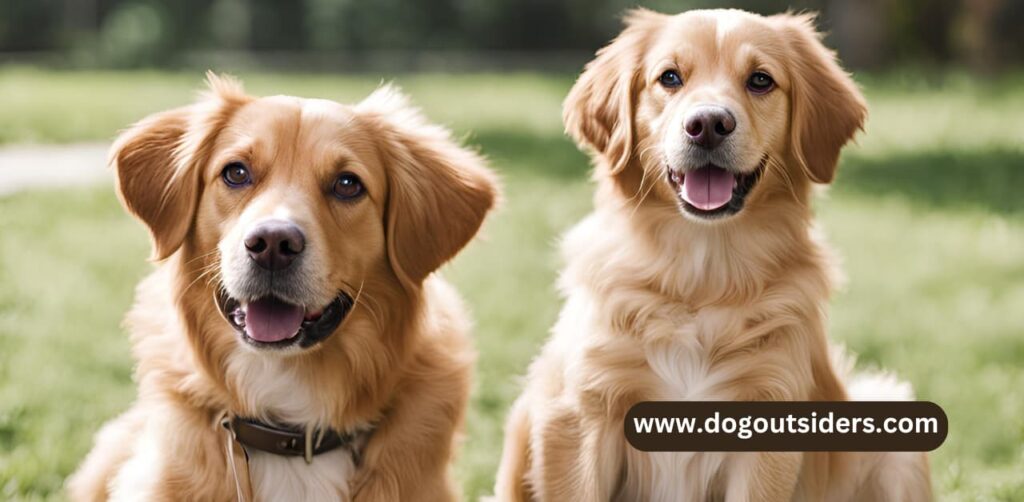
Benefits of Outdoor Dogs
Outdoor dogs can enjoy more space to roam and explore compared to indoor dogs, leading to increased physical activity. They have the freedom to engage in natural behaviors like digging and running without restrictions.
The outdoor dog breeds such as Siberian Huskies and Australian Shepherds are better suited for outdoor living due to their high energy levels and need for regular exercise. These breeds thrive in environments where they can expend their energy through various activities.
Owners who work long hours may find it more convenient to have outdoor dogs as they require less supervision during the day. However, it’s crucial to ensure that outdoor dogs have proper shelter, food, water, and regular interaction with their owners.
Outdoor dogs can serve as working dogs, assisting in tasks like herding livestock or guarding property. Their innate instincts make them well-suited for specific roles that benefit both the dog and its owner.
Choosing the Right Breed
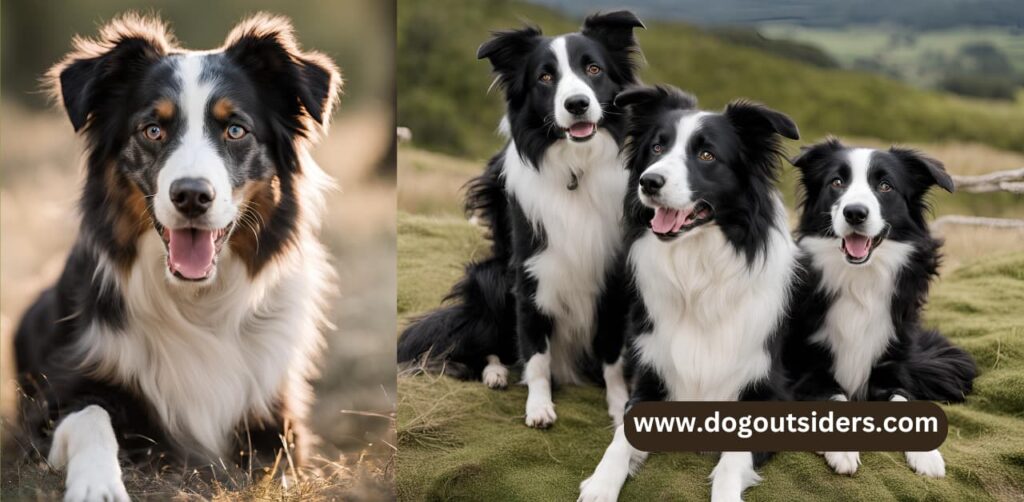
Temperament
Dog breeds vary widely in their temperament, which is crucial when selecting a breed for outdoor living. Some breeds are more independent and suited for herding or guarding livestock, while others are more social and thrive in domestic settings.
Understanding the temperament of different breeds is essential to ensure they adapt well to an outdoor environment. For example, herding breeds like Australian Shepherds or Border Collies are known for their high energy levels and intelligence, making them ideal for outdoor activities.
When considering an outdoor dog, it’s important to assess the temperament of the breed to match it with your lifestyle. Dogs with a strong herding instinct may not be suitable if you live in a small apartment without access to open spaces.
Legal and Welfare Concerns
Legal Implications
Keeping a dog outside raises various legal implications that owners must consider. Laws regarding animal welfare vary by location, but generally mandate adequate shelter, food, and water for outdoor dogs. Failure to meet these requirements can result in fines or even removal of the animal. Local ordinances may also dictate noise levels and confinement standards for outdoor pets.
Understanding the legal framework is crucial for responsible pet ownership. Compliance with regulations ensures the well-being of outdoor dogs and fosters a harmonious relationship with neighbors. It is essential to research and adhere to relevant laws to avoid any legal consequences.
Welfare Concerns
Outdoor dogs face specific welfare concerns that owners need to address. Exposure to extreme weather conditions, such as heatwaves or cold snaps, can pose serious risks to the dog’s health. Lack of social interaction and mental stimulation can lead to boredom and behavioral issues in outdoor dogs.
Providing adequate shelter, regular vet check-ups, and interactive toys can help mitigate these welfare concerns. Owners should prioritize their dog’s physical and mental well-being by creating a safe and enriching environment.
Taking Action
If there are concerns about a dog’s living conditions outdoors, several actions can be taken to ensure the animal’s welfare. Contacting local animal control or humane society is a crucial step in addressing potential neglect or abuse cases. Offering assistance to the owner in improving the dog’s living conditions through education and resources can also make a positive impact.
Taking proactive steps to advocate for outdoor dogs’ well-being not only benefits the animals but also promotes a culture of responsible pet ownership within the community.
Creating a Safe Outdoor Space
Adequate Shelter
Providing adequate shelter is crucial for your dog’s well-being in the outdoors. A sturdy doghouse can protect them from harsh weather conditions like rain, wind, and extreme heat. Ensure the doghouse is elevated off the ground to prevent moisture and drafts.
Adequate shelter also includes providing shade in the outdoor space. Trees, canopies, or purpose-built structures can offer relief from direct sunlight. This helps prevent heatstroke and keeps your dog comfortable throughout the day.
It’s essential to regularly inspect the shelter for any damages or wear and tear. A safe outdoor space should have a shelter that is in good condition to provide effective protection for your furry friend.
Temperature Regulation
Regulating temperature in the outdoor area is vital for your dog’s safety. During hot weather, ensure there are cooling options available such as a water source or a shallow pool for your dog to cool off.
In colder climates, consider providing insulation in the shelter to retain heat. Blankets or heating pads designed for pets can help keep your dog warm during chilly nights.
Monitoring the temperature within the outdoor space is crucial. Consider installing a thermometer or using a smart device like a Tractive GPS tracker with temperature monitoring capabilities to ensure your dog is not exposed to extreme temperatures.
Ventilation Importance
Proper ventilation is key to maintaining a healthy environment in your dog’s outdoor space. Good air circulation helps prevent stale air buildup, which can lead to respiratory issues for your pet.
Ensure there are openings in the shelter for fresh air to flow through. Windows or vents can facilitate airflow and keep the space well-ventilated throughout the day and night.
Regularly clean and maintain the ventilation openings to prevent blockages and ensure optimal air circulation within the outdoor area. Fresh air is essential for your dog’s overall comfort and health.
Shelter Needs
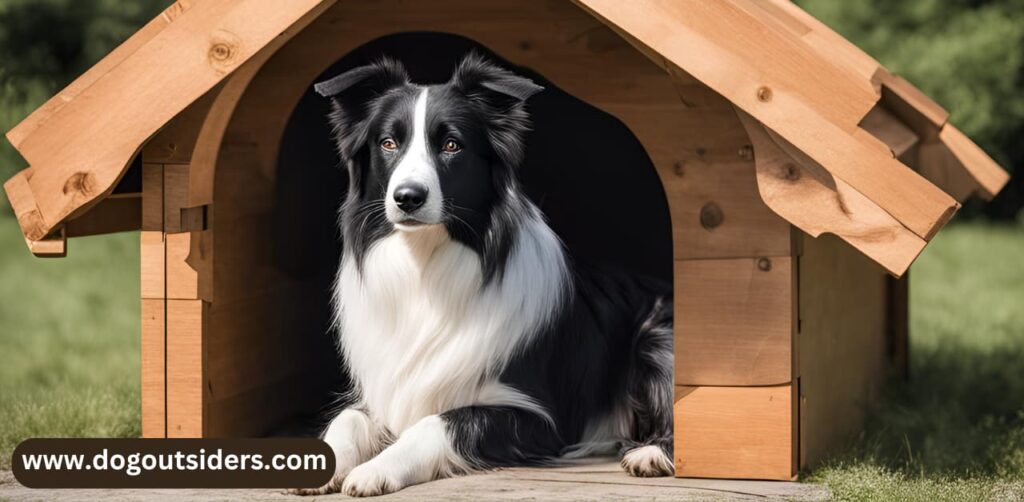
Suitable Kennel
A well-constructed kennel is crucial for outside dogs, providing them with a safe and comfortable space. The kennel should have proper insulation to shield the dog from extreme weather conditions.
Outdoor dogs require a kennel that offers sufficient space for movement and rest. A spacious kennel allows the dog to stretch out comfortably and move around freely. It should also have a raised floor to keep the dog off the cold ground.
The kennel’s entrance should be designed to keep out rain and wind while providing adequate ventilation. A covered doorway helps prevent drafts and keeps the interior dry during rainy days. Proper ventilation ensures good air circulation within the kennel.
Protection from Elements
Providing shelter from rain, wind, and sunlight is essential for the well-being of outside dogs. A sturdy roof over the kennel protects the dog from rainfall, preventing them from getting wet and cold. Adequate shelter also shields them from harsh winds that can cause discomfort.
During hot weather, it’s important to offer shade to prevent overheating. Placing the kennel in a shaded area or adding a canopy can help regulate the temperature inside. This ensures that the dog remains cool and comfortable even on scorching days.
In cold weather, insulating the kennel with blankets or straw can help retain heat and keep the dog warm. Extra bedding provides comfort and warmth during chilly nights, ensuring that the dog stays cozy despite low temperatures.
Health Considerations
Regular vet check-ups are crucial for outside dogs to monitor their health and address any issues promptly. Vaccinations, deworming, and heartworm prevention are vital to ensure the dog’s well-being. Preventive measures such as flea and tick treatments help protect against parasites.
Ensuring access to clean water at all times is essential for hydration, especially during hot days when dogs are more prone to dehydration. Providing a balanced diet tailored to meet an outdoor dog’s nutritional needs supports their overall health and energy levels.
Toys and interactive activities are beneficial for outside dogs to prevent boredom and encourage mental stimulation. Engaging in playtime with your furry friend strengthens your bond while keeping them physically active and mentally engaged.
Exercise Essentials
Importance of Exercise
Dogs that spend significant time outdoors require regular exercise to maintain their physical and mental well-being. Lack of activity can lead to behavioral issues like excessive barking or digging.
To ensure your outdoor dog stays healthy, it’s crucial to provide structured exercise routines. Daily walks, runs, or hikes are excellent ways to keep your dog active and engaged.
Engaging in physical activities helps outdoor dogs release pent-up energy, reducing the likelihood of destructive behaviors such as chewing on furniture or trying to escape the yard.
Regular exercise also plays a vital role in preventing obesity in outdoor dogs. Keeping them at a healthy weight range is essential for their overall health and longevity.
Training Techniques
Incorporating training sessions into your dog’s exercise routine can be beneficial for both physical and mental stimulation. Training not only helps improve obedience but also provides mental challenges that keep your dog sharp and focused.
Using positive reinforcement methods such as treats or praise can make training sessions enjoyable for your outdoor dog. This approach fosters a positive bond between you and your pet while reinforcing good behavior.
Introducing interactive toys during playtime can enhance your dog’s physical activity levels while keeping them mentally stimulated. Toys like fetch balls or tug ropes are great options to incorporate into their exercise regimen.
Implementing a consistent training schedule alongside regular exercise helps establish a sense of routine and structure for your outdoor dog. This predictability can contribute to their overall well-being and contentment.
Monitoring Tools
Investing in a reliable GPS tracker for your outdoor dog can offer peace of mind by allowing you to monitor their whereabouts at all times. These trackers are especially useful during hikes or other outdoor activities where dogs may wander off.
A GPS tracker provides real-time location updates, ensuring that even if your dog manages to escape the yard, you can quickly locate them. This technology adds an extra layer of security for outdoor dogs with a tendency to roam.
By utilizing a GPS tracker, you can track your dog’s daily activity levels, including distance covered and calories burned. This data allows you to tailor their exercise routine based on their individual needs and fitness goals.
Ensuring that your outdoor dog receives adequate exercise is essential for their overall health and happiness. By incorporating structured routines, training techniques, and monitoring tools, you can create a fulfilling lifestyle that promotes physical fitness and mental stimulation.
Socialization Strategies
Animal Interaction
Introduce your dog to other animals gradually to prevent aggression or fear. Expose them to different species, sizes, and ages for a well-rounded social experience. Monitor interactions closely to ensure safety and positive outcomes.
Dogs benefit from interacting with various animals like cats, rabbits, or birds. This exposure helps them develop social skills and reduces anxiety around different creatures. Gradual introductions are key to ensuring a positive experience for both your dog and the other animals involved.
When introducing your dog to new animals, observe their body language closely. Look for signs of stress, fear, excitement, or comfort. Understanding these cues can help you intervene if needed and make the interaction smoother.
Human Interaction
Encourage regular interaction with people of all ages and backgrounds. Engage in activities that involve human contact such as walks in the park or visits to pet-friendly events. Reward positive behavior during interactions to reinforce good social habits.
Regular human interaction is crucial for an outdoor dog’s social development. Taking your dog on walks in busy areas or inviting guests over can provide valuable exposure to different people. These experiences help them feel comfortable around strangers and prevent aggressive behavior.
Positive reinforcement plays a significant role in shaping your dog’s social behavior towards humans. Rewarding friendly gestures like wagging tails or calm demeanor encourages these behaviors to become more frequent. Consistent rewards create a positive association with human interaction for your dog.
Preventing Loneliness
Outdoor dogs are prone to loneliness due to isolation from constant human companionship. To prevent this, create a stimulating environment with toys, puzzles, and interactive feeders. Rotate toys regularly to maintain interest and prevent boredom. Spend quality time with your dog daily through playtime, training sessions, or simply being present.
Loneliness can lead to behavioral issues in outdoor dogs such as excessive barking or destructive behavior. Providing mental stimulation through interactive toys challenges their minds and prevents boredom. Regularly changing toys keeps them engaged and curious about their surroundings.
Spending quality time with your outdoor dog is essential for their emotional well-being. Engaging in activities together strengthens your bond and alleviates feelings of loneliness they may experience when left alone outdoors for extended periods.
Health and Maintenance
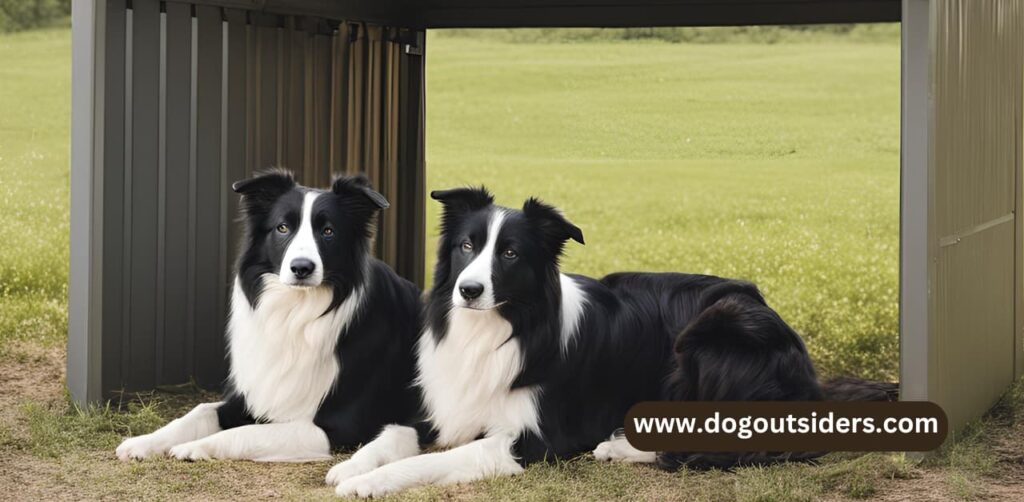
Providing Proper Nutrition
Outdoor dogs require a balanced diet to support their active lifestyle. Owners should ensure they have access to high-quality dog food to meet their nutritional needs. Prevent feeding them human food as it can be harmful to their health.
Maintaining a healthy weight is crucial for outdoor dogs, especially those with extra energy needs. Regular exercise along with a balanced diet helps in keeping their body in optimal condition. Ensure they have access to fresh water at all times.
To prevent health issues, outdoor dogs need a diet that suits their high activity levels. A diet rich in proteins and essential nutrients supports their working or hunting activities, providing the necessary fuel for extended periods of physical exertion.
Exercise and Mental Stimulation
Outdoor dogs thrive on having ample space to roam and play, so it’s essential to provide them with a secure and spacious outdoor area. Regular exercise not only keeps them physically fit but also stimulates their minds, preventing boredom and behavioral issues.
Adequate mental stimulation is crucial for outdoor dogs to prevent anxiety and destructive behavior. Interactive toys, training sessions, and engaging activities help keep their minds sharp and focused. Spending quality time with your dog strengthens the bond between you.
Incorporating mental challenges into your outdoor dog’s routine can enhance their problem-solving skills and overall well-being. Consider setting up obstacle courses or hiding treats for them to find, encouraging natural behaviors like sniffing and exploring.
Grooming and Healthcare
Regular grooming is essential for outdoor dogs to keep their coat healthy and free from mats or tangles. Brushing them regularly helps distribute natural oils, promoting skin health and reducing shedding. Check for ticks or fleas after outdoor adventures.
Maintaining good hygiene practices such as cleaning their ears, trimming nails, and brushing teeth regularly contributes to their overall health. Establishing a grooming routine early on helps outdoor dogs become comfortable with the process, making it easier for both the dog and the owner.
Ensuring regular veterinary check-ups are crucial for outdoor dogs to monitor their health status and address any potential issues promptly. Vaccinations, parasite prevention treatments, and dental care are vital aspects of maintaining their well-being.
Addressing Common Worries
Outdoor Environment
Outdoor dogs are often exposed to various environmental factors that can raise concerns among pet owners. Weather conditions, such as extreme heat or cold, can pose risks to their health.
Keeping a close eye on temperature changes is crucial to ensure the well-being of outdoor dogs. Providing shelter from harsh weather elements like rain, snow, and strong winds is essential.
Ensuring that the outdoor area is secure and free from hazards is vital. Regularly inspecting the fencing for any gaps or damage can prevent potential escapes and keep the dog safe.
Socialization Needs
Socialization is a key aspect of a dog’s life, regardless of whether they are kept indoors or outdoors. Lack of social interaction for outdoor dogs can lead to loneliness and behavioral issues.
Creating opportunities for socializing with other dogs or humans through regular walks in the neighborhood or visits to dog parks can help address this concern. Providing toys and engaging in interactive playtime also contributes to mental stimulation.
Establishing a routine that includes regular interactions and activities can significantly improve the overall well-being of outdoor dogs. Ensuring they receive adequate attention and care is essential for their happiness.
Health and Safety
Maintaining the health and safety of outdoor dogs requires diligent care and attention. Concerns may arise regarding exposure to parasites, such as fleas and ticks, which can affect their health.
Regularly checking for signs of parasites and promptly addressing any infestations is crucial for preventing health issues. Using preventative measures, such as flea collars or topical treatments, can help protect outdoor dogs from parasites.
Providing a balanced diet, access to clean water, and regular veterinary check-ups are fundamental aspects of ensuring the overall health and well-being of outdoor dogs. Proper grooming and hygiene practices also play a significant role in keeping them healthy.
Practical Care Tips
Regular Grooming
Maintaining a consistent grooming routine is crucial for your outdoor dog’s well-being. Brushing their coat regularly helps prevent matting and removes dirt and debris. Bathing your dog when necessary, using a gentle dog shampoo, keeps their skin healthy.
Regular grooming not only keeps your dog looking neat but also helps you detect any skin issues early on. Inspecting their fur for ticks after walks or outdoor playtime is essential to prevent tick-borne illnesses. Invest in a tractive device, such as a GPS tracker, to locate your dog if they wander off.
Grooming sessions are also an excellent opportunity to bond with your furry friend. Spending quality time grooming them strengthens your relationship and allows you to notice any changes in their body that may require attention.
Proper Shelter
Providing adequate shelter is vital for dogs spending extended periods outdoors. A sturdy, insulated dog house protects them from harsh weather conditions. Ensure the shelter is elevated off the ground and has proper ventilation to maintain a comfortable temperature inside.
In colder climates, consider adding warm bedding or blankets to keep your dog cozy during chilly nights. Regularly clean and inspect the shelter for any signs of damage or pests. Creating a comfortable and safe environment ensures your outdoor dog feels secure.
When I first started keeping my dog outside, I struggled to find the right balance between protection and freedom. However, after researching and investing in a durable dog house with proper insulation, I noticed a significant improvement in my dog’s overall well-being.
Nutritious Diet
A balanced diet plays a significant role in maintaining your outdoor dog’s health. Ensure they have access to fresh water at all times and provide high-quality dog food rich in essential nutrients. Consult with your veterinarian to determine the best diet plan based on your dog’s breed and activity level.
Avoid leaving food out for extended periods as it may attract pests or spoil quickly. Feed your outdoor dog at scheduled times, allowing them to digest properly and maintain a healthy weight. Monitoring their food intake helps prevent obesity-related health issues.
Transitioning my outdoor dog to a nutritious diet was challenging initially, but observing positive changes in their energy levels and coat condition made it worthwhile.
Conclusion:
In sum, ensuring the well-being of an outdoor dog involves a comprehensive approach that covers breed selection, legal considerations, safety measures, shelter requirements, exercise routines, socialization techniques, health maintenance, and common worries. By addressing these aspects diligently, one can provide a fulfilling and secure environment for their furry companion. Remember to prioritize the dog’s needs above all else and seek professional advice whenever necessary to guarantee a happy and healthy life for your outdoor pet.
Take the time to reflect on the insights shared in this guide and implement the recommended strategies thoughtfully. Your commitment to understanding and meeting your outdoor dog’s requirements will not only strengthen your bond but also contribute to their overall happiness and well-being. Stay informed, stay proactive, and enjoy the rewarding journey of caring for your beloved outdoor dog.
FAQ’s:
Not all dog breeds are suited for outdoor living. Some breeds have thick coats and high energy levels ideal for outdoor environments, while others may struggle with extreme temperatures or require more human interaction indoors.
To ensure your outdoor dog’s safety in the yard, secure the perimeter with a fence to prevent escape, provide adequate shelter from weather conditions, remove toxic plants, and regularly check for any hazards that could harm your pet.
Outdoor dogs require regular veterinary check-ups, vaccinations against common diseases, parasite prevention measures such as flea and tick control, and proper grooming to maintain their coat health. Monitoring their diet and ensuring access to fresh water is also crucial for their well-being.
Socializing an outdoor dog involves exposing them to various environments, people, and animals to prevent fear or aggression. Outdoor dogs should be trained to interact positively with strangers and other pets they may encounter while out in public spaces.
Common worries about keeping a dog outdoors can be addressed by providing ample shelter, regular exercise opportunities, socialization experiences, veterinary care, mental stimulation through toys or activities, and ensuring the dog receives sufficient attention and companionship from the owners.

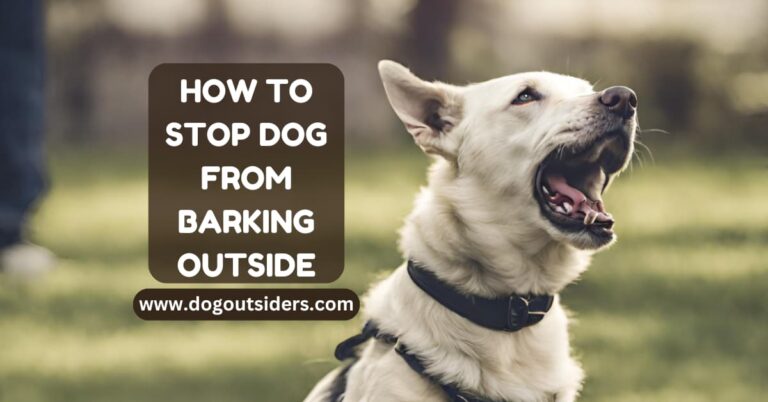

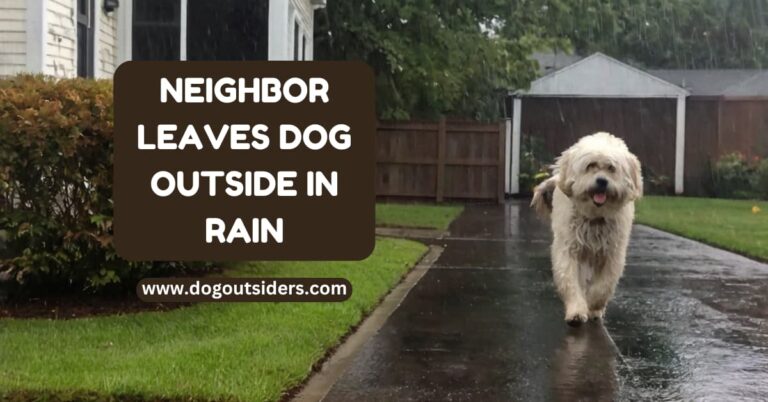

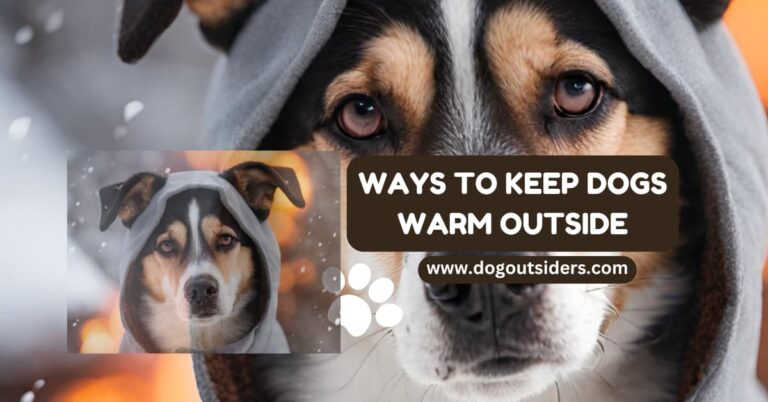

2 Comments